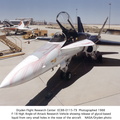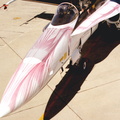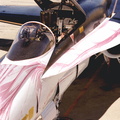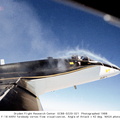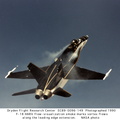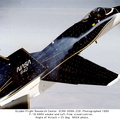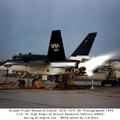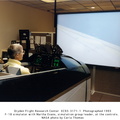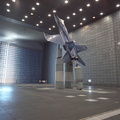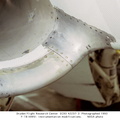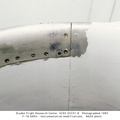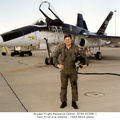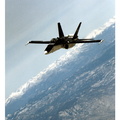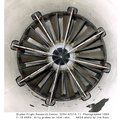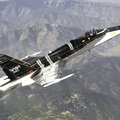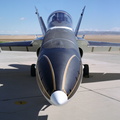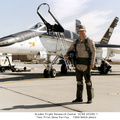
WIKIARCHIVES.SPACE
The Human Spaceflight Archive

During the final phase of tests with the HARV, Dryden technicians installed nose strakes, which were panels that fitted flush against the sides of the forward nose. When the HARV was at a high alpha, the aerodynamics of the nose caused a loss of directional stability. Extending one or both of the strakes results in strong side forces that, in turn, generated yaw control. This approach, along with the aircraft's Thrust Vectoring Control system, proved to be stability under flight conditions in which conventional surfaces, such as the vertical tails, were ineffective.
Information
- Taken in
- Edwards Air Force Base
- Author
- NASA
- Description
-
During the final phase of tests with the HARV, Dryden technicians installed nose strakes, which were panels that fitted flush against the sides of the forward nose. When the HARV was at a high alpha, the aerodynamics of the nose caused a loss of directional stability. Extending one or both of the strakes results in strong side forces that, in turn, generated yaw control. This approach, along with the aircraft's Thrust Vectoring Control system, proved to be stability under flight conditions in which conventional surfaces, such as the vertical tails, were ineffective.
- Created on
- Friday 22 March 1996
- Albums
- US SPACE PROGRAM / AERONAUTICS RESEARCH / F-18 HORNET / HARV
- Source link
- https://images.nasa.gov/search?q=nasa&page=1&media=image,video,audio&yearStart=1985&yearEnd=1985
- Visits
- 29
- Rating score
- no rate
- Rate this photo
- License
- Public Domain
- Modified by WikiArchives
- No (original)
- Downloads
- 0
Powered by Piwigo








